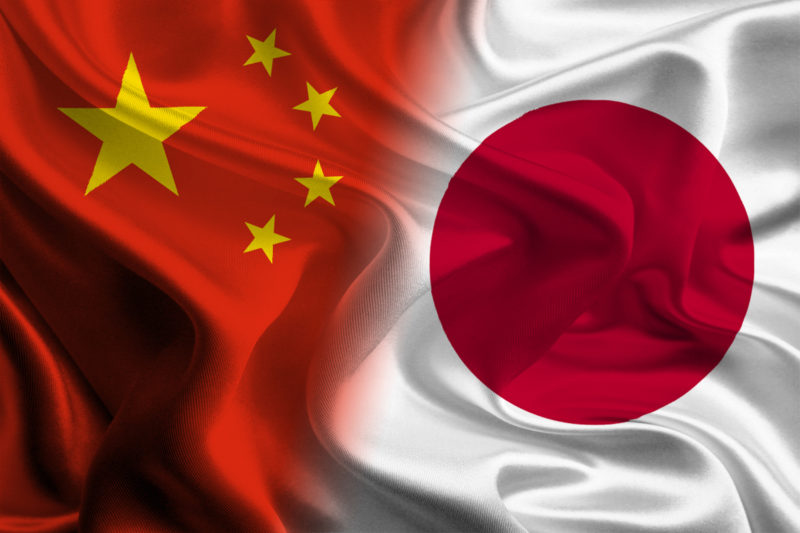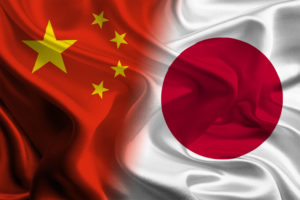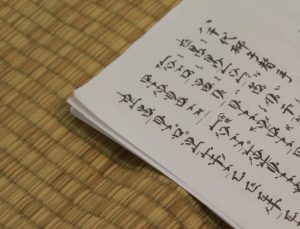Two Equally Exciting Languages
Whether you want to start learning Japanese or Chinese, you have an exciting road ahead of you. But, these two languages are quite similar. If you’re attracted to both, deciding between learning Japanese vs Chinese can be a hard choice to make. So, to make your life a little easier, here are all the similarities and differences to help you decide which language is easier to learn between Chinese vs Japanese.
How Many People Speak Chinese vs Japanese?
China’s one of the most populous countries in the world. So, it’s no surprise that a lot of people speak Chinese. 1117 million people speak Mandarin Chinese. That’s over a billion speakers. This makes it the 2nd most widely spoken language in the world, just after English.
Although the Japanese population isn’t nearly as massive as Chinese, there are still a good number of people who speak it. There are 130 million native Japanese speakers, making it the 9th most popular language in the world. That’s still top 10!
Where is Chinese vs Japanese Spoken?
This isn’t a complicated question. Of course, Chinese is spoken primarily in China, and Japanese in Japan. But, these two languages are very important, so nearby countries also use their language.
Chinese is commonly spoken in Hong Kong, Singapore, Macau, Tibet and Taiwan. Although Japaneses is only an official language in Japan, there are considerable Japanese speaking communities in the United States and Brazil.

Overview of the Chinese Language
Chinese is one of the official languages of China. It exists in many dialects, but Mandarin and Cantonese are among the most popular forms. The other dialects include Huizhou, Jin, Ping, Hakka, Wu, Yue, Min, Gan, and Xiang.
The roots of the Chinese languages lay in the Sino-Tibetan and Sinitic language family. The ancient language has been in existence for long and it has undergone various changes over the years.
The Chinese language is written in Hanzi characters. However, its spoken version exists in another form. The written variety hasn’t changed drastically over the years. However, the spoken form managed to evolve greatly.
Overview of Japanese
The Japanese language is spoken mostly in Japan and it’s the official language of the country. The language is written in kanji, katakana, and hiragana characters. This language has undergone various reforms throughout the ages as it has been in existence since the 9th century. Kanji is quite difficult to master while learning Kana is moderately difficult.
A lot of people think that Japanese originated from Chinese. But, that’s not true. Japanese is a Japonic language. Its roots precede their writing. But, thank to their close geography and shared history, it is very close to Chinese. You can see this today in its writing and loanwords.

The Similarities of the Chinese vs Japanese Writing System
The Japanese writing system originally used Chinese script. Today, we call these characters kanji. So, the two languages are very similar in their writing.
But, since Chinese characters don’t reflect Japanese spoken language well, they had to add hiragana and katakana. These two phonetic alphabets complete the Japanese writing system. Used alongside kanji, the Japanese alphabet consists of three scripts.
Traditionally, both Chinese and Japanese are written top to right, left to right. But, nowadays, they’re also written just left to right.
Which is Easier to Learn: Chinese vs Japanese?
Both Chinese and Japanese have a fierce reputation to be the hardest languages to learn. But, for English native speakers, that’s not accurate. The truth is, there’s no such thing as an easy or hard language. But, whichever you choose will require a commitment from you if you want to reach fluency. So, choosing the easier language can motivate you along the journey.
According to the US Foreign Service Institute, both languages are a Category V language in terms of difficulty. This means that the estimated time to reach fluency for native English speakers is 2200 hours or 44 weeks of study.
Of course, you can take these numbers with a grain of salt. No government body knows your motivation, your goals, and what language learning resources you use. So, it really can’t accurately tell you how long it takes to learn a language.
But, this didn’t answer our question yet: which is easier, Chinese or Japanese?
Well, they’re equally foreign to English native speakers. The writing system, the grammar, and the vocabulary will mostly be completely new knowledge. But, the one major difference between Japanese and Chinese is pronunciation.
Chinese is a tonal language. This means that depending on how you pronounce a word, it may have a different meaning. Japanese on the other hand isn’t tonal. Although there are intonation differences you have to be aware of, you don’t have to tip-toe around sounds to convey the right meaning.
This is why Japanese is easier to learn than Chinese. English native speakers can reach fluency faster.
Chinese vs Japanese: Which One Should I Choose?
If you’re still torn between Chinese and Japanese, it ultimately comes down to your goals. Both languages look amazing on a CV or a University application. Both China and Japan are important contributors to the global economy.
Japanese is slightly easier to learn. But, Chinese is much more widely spoken. Both languages have their pros and cons. Ultimately whichever language pulls on your heartstrings the most is the winner. Let your passion for the language guide your learning journey. It will be much more enjoyable and effective if you love it.

Learning Japanese and Chinese at the Same Time
Of course, you can always opt to learn Japanese and Chinese at the same time. But, we really don’t recommend this. These two languages share a lot of loan words and characters in their writing. This means that learning them at the same time presents the danger of confusing them easily.
When you’re learning two languages at the same time, one of two things could happen. You either learn them in twice the time, or you only learn half of the things you would within the usual timeframe. Neither of these options are ideal. The best thing to do is to learn one first and then the other once you reached a level of comfortable fluency.
If you insist on learning two languages at the same time, make sure they’re not related at all. Try Chinese with Swedish. Or Japanese with Spanish. You’ll have a much easier time learning these languages than Chinese and Japanese at the same time.
Learn Chinese or Japanese with OptiLingo
Whether you decide to learn Chinese or Japanese, you can find them both on OptiLingo. This app is the most useful to learn both languages, because it gives you the most useful vocabulary. The words and phrases you learn with OptiLingo are the same ones real Chinese and Japanese locals speak.
So, you can really cut down on how fast you can learn both of these languages. Don’t waste time on unnecessary studies. Instead, let OptiLingo focus your language learning journey to the essentials. Achieve fluency in Chinese or Japanese with OptiLingo!







